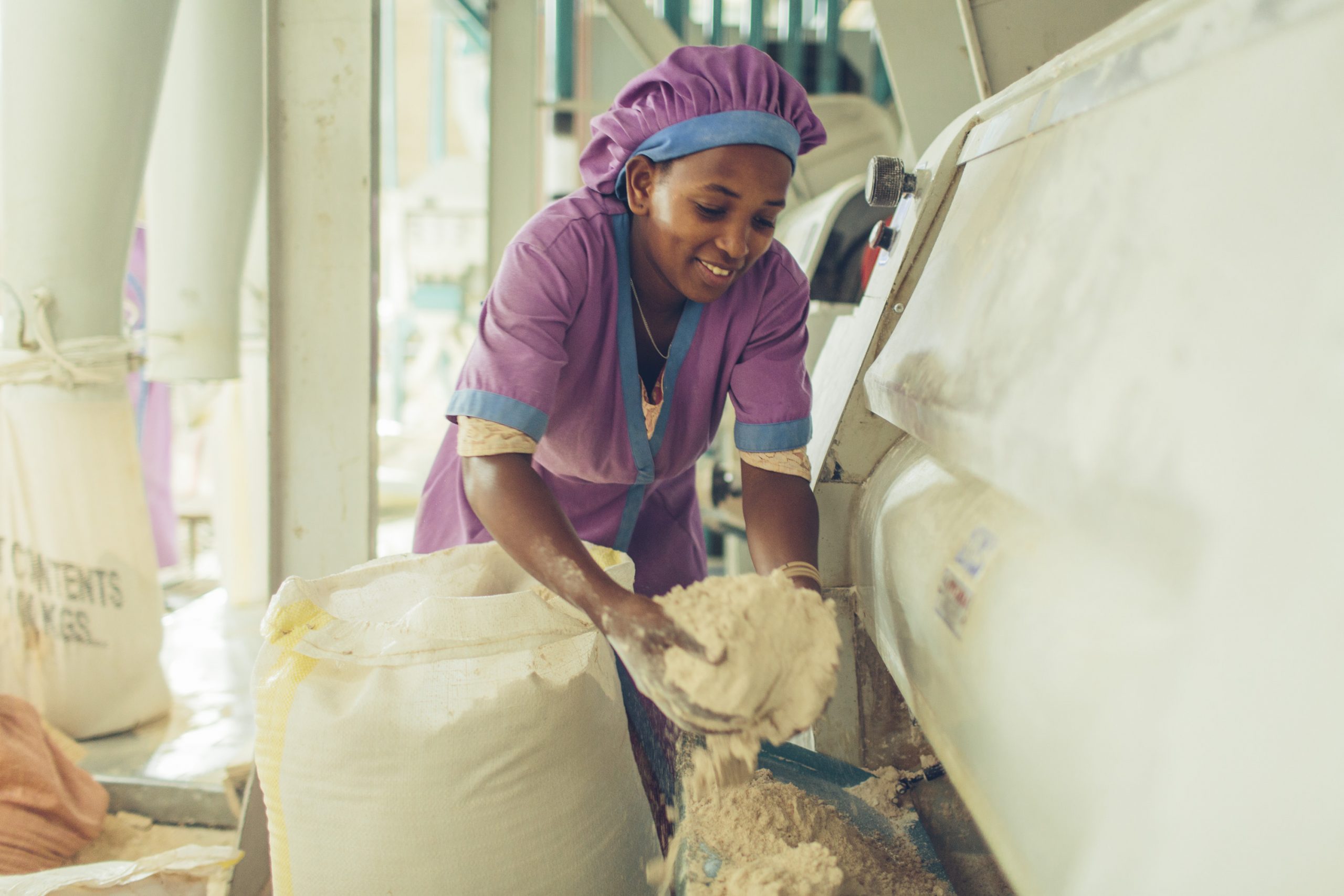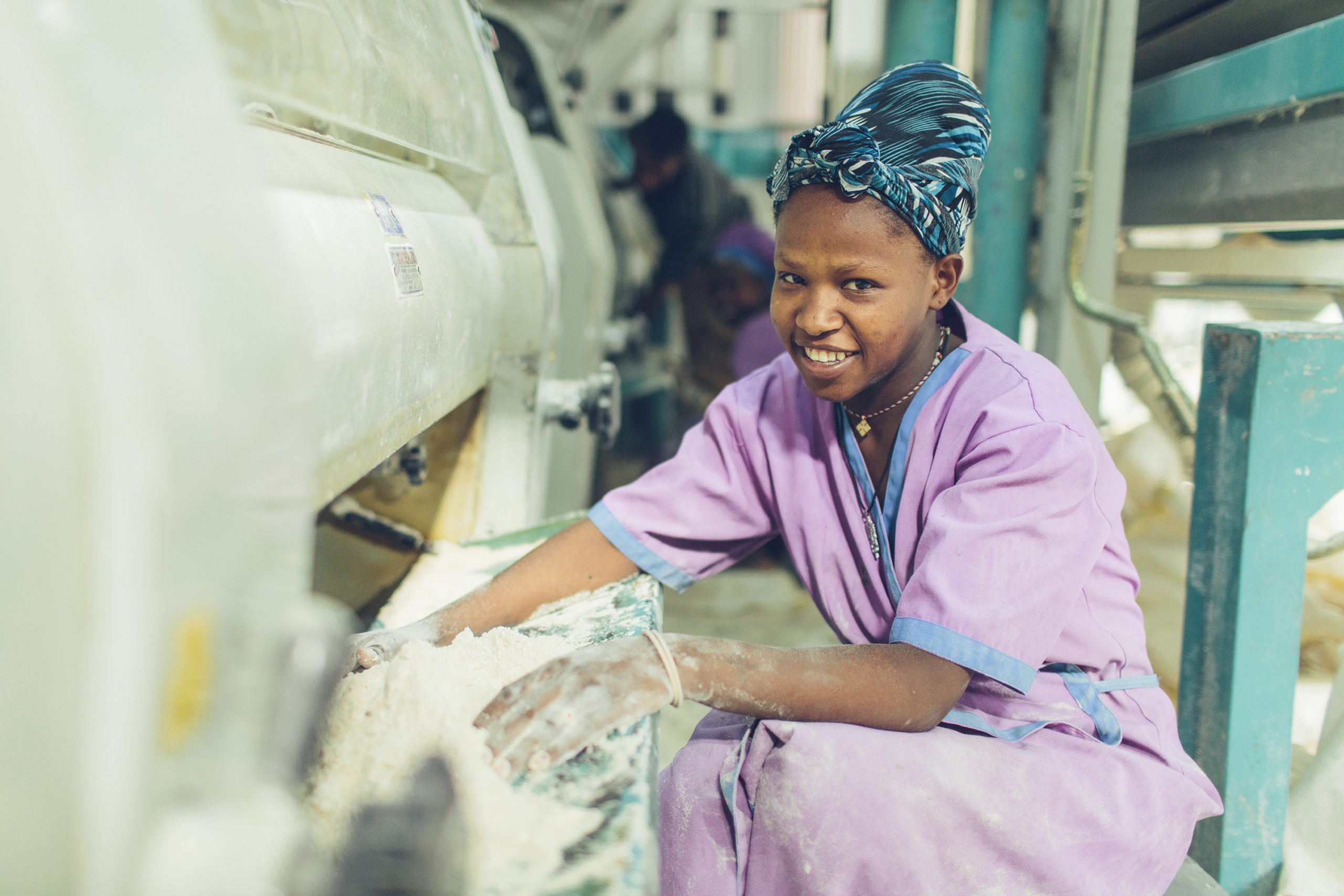Investing in Nutrition and the Path to Zero Hunger
This World Food Day, we spoke with Dr. Andreas Bluethner, Director of Nutrition at the Bill & Melinda Gates Foundation, to discuss how COVID-19 is threatening nutrition in the developing world – and how interventions such as improved food fortification can help tackle this critical challenge.

The COVID-19 crisis is exacerbating one of the world’s worst problems: hunger. Last year, approximately 2 billion people worldwide did not have regular access to safe, nutritious, and sufficient food – a number expected to be even higher this year because of COVID-related strains on food systems. Hunger and malnutrition keep people from reaching their full potential, negatively affecting everything from health and education outcomes to entire national economies.
Food fortification – adding micronutrients to common staple foods – is an essential part of improving nutrition in the developing world. The Strengthening African Processors of Fortified Foods (SAPFF) project – a partnership between TechnoServe, Partners in Food Solutions, and the Bill & Melinda Gates Foundation – helps food companies in Nigeria, Kenya, and Tanzania improve their capacity to produce and sell fortified foods for local markets, providing consumers with the nutrition they need to lead successful lives.
On World Food Day, TechnoServe spoke with the Gates Foundation’s Dr. Andreas Bluethner about the growing malnutrition challenge and bright spots in the war against hunger.
The private sector is critical to producing safe, affordable, and nutritious food for all.”
— Dr. Andreas Bluethner, Nutrition Director, Bill & Melinda Gates Foundation
TechnoServe: What do you see as the biggest threats to nutrition in sub-Saharan Africa, particularly in the face of COVID-19?
Dr. Bluethner: The impacts of COVID-19 on nutrition have been devastating and multi-dimensional. First and foremost are the economic consequences: people simply don’t have the income and resources they need to afford healthy diets. As a result, we are seeing more people hungry and malnourished than we have in years. Researchers have estimated that an additional 140 million people will be living below the poverty line, and 265 million will experience acute food insecurity due to COVID-19. Some have estimated that the pandemic has pushed our progress on Sustainable Development Goal 2 (Zero Hunger) back by at least a decade.

We need to be clear that unless malnutrition remains a top political priority, it could be the cause of some of the very worst impacts of the pandemic. Even before COVID-19, malnutrition was the underlying cause of nearly half of child deaths—and it’s only more critical now. Nutrition and certain micronutrients are essential for individuals’ resilience to infectious diseases. There’s mounting evidence that shows the connection between nutrition and peoples’ ability to withstand and recover from infectious diseases such as measles, Ebola, and yes, COVID. So in the face of the pandemic, it’s critical that we view nutrition as an urgent short-term priority to help build resiliency, but also a continuing long-term development goal to help all people survive and thrive.
TechnoServe: What do you see as the critical pathways to improving this nutrition challenge?
Dr. Bluethner: There’s no silver bullet to addressing malnutrition—we need complementary interventions to achieve good nutrition and health for all. Some interventions can best address short-term needs, such as supplementation, while others are long-term investments in preventing malnutrition in the first place, such as dietary diversification. Some interventions are targeted to specific high-risk groups, while others are population-based. We need them working in tandem to achieve Zero Hunger.
Nutrition is one of the best investments that a country can make in economic and human development. Doing it well requires an inclusive and diligent national plan, active multi-sectoral engagement, and sustainable donor commitment. Large-scale food fortification—alongside supplementation and dietary diversity—should be a critical component of nutrition planning in countries with the relevant prevalence of micronutrient deficiencies to ensure people get the nutrition they need to survive and thrive.
TechnoServe: Why is food fortification such an essential part of improving nutrition in the developing world, particularly during this pandemic?
Dr. Bluethner: The whole population is affected by the pandemic, and food fortification is unique because it provides critical micronutrients to a broad population—it’s market-based and, when done right, can go to scale quickly and be sustained. It’s unique because it’s a public health intervention that’s delivered by the private sector. This means that as long as staple foods are produced—as long as people can buy them—it’s an intervention that can be maintained. And right now, we know that staple foods are the main source of food for many families because they can’t afford fresh produce and animal-source protein.
This also means that fortification is fairly budget-neutral for the public sector because consumers and industry share its marginal costs. In times of economic stress, food fortification has a greater chance of being sustained than some other interventions, provided the government’s food authorities ensure the quality of the program with cost-effective routine monitoring systems.
In light of the pandemic, it’s also important to consider the composition and level of micronutrients in different foods and to make adjustments. For example, not many edible oil programs consider vitamin D yet, even though they could. Fortification standards should be consistently reviewed to ensure they’re delivering the most good for the poorest and most malnourished part of the population.
[Food fortification] is unique because it’s a public health intervention that’s delivered by the private sector.”
— Dr. Andreas Bluethner, Nutrition Director, Bill & Melinda Gates Foundation
TechnoServe: What is the role of technology in advancing food fortification, especially in today’s world?
Dr. Bluethner: First of all, I think it’s really important that we celebrate so many of the millers in lower-middle-income countries that already make fortification happen at a large scale—they’re already reaching up to a billion people as we speak! That in itself is advanced technology applied. But we know it’s a journey to get to the next level. When we look at rewarding the private sector, it needs to be for achieving high-quality fortification with good transparency.
I believe newer technologies—including analytics, IT, and mobile data transfer—will make it faster and more cost-effective to see who is delivering quality according to standards and serving customers well. Customers, with cell phones in their hands, will soon have more information at their fingertips about the food they consume and its quality. There’s always a strong business case to be made for serving consumers well, championed by businesses with strong, trusted brands and quality to offer.

TechnoServe: Data management is key to understanding and responding to development needs. What needs to be done to improve data management and its application in nutrition programs?
Dr. Bluethner: Data is a key means to understand, sustain, and target nutrition interventions—but it’s a means, not an end. Studying problems with data should be in the context of directing us to solutions. Unfortunately, we still have a lot of data silos and existing data is often not widely shared or utilized. Modern technology that helps fill gaps—like generating missing data or more effectively utilizing the data we already have—will help us deliver greater impact.
Examples of areas where we need more and better-utilized data include food and micronutrient intake; the prevalence of micronutrient deficiencies; fortification legislation and standards by vehicle and micronutrient; and real-time data on the fortification levels of individual millers and the staple foods they produce.
In combination with a technological push, we need a new culture of open-source data generation and use in food fortification. The more that organizations proactively compare notes and data, ensuring information is utilized across boundaries and silos, the more effective it will become.
TechnoServe: In addition to working to improve nutrition through policy and other means, why is it important to take a “business approach” and work directly with food processors?
Dr. Bluethner: Stakeholder engagement for fortification is not an either/or but an “as well as.” Combating hunger was a public sector, donor-driven domain for decades. It has taken a long time, but there’s greater recognition than ever that the private sector is critical to producing safe, affordable, and nutritious food for all—and that the public sector should be a key partner in delivering it to the malnourished.
It must be a collaboration, with the private sector committing to public health goals, and the public sector remaining open to private sector collaboration and helping channel its contributions toward the highest-impact possible. When only one actor is responsible, achievements can fall apart quickly—but when the right stakeholders and skillsets are engaged, we can achieve a jointly built system that delivers better health for entire populations, sustainably and at scale.




